.
[i]Recently I have been asked to write an article about ‘future watch trends’ so I better get this out of the way and clear the decks. It’s not a review but a file dump, tidied-up a tad here and there. Picture wise, I ‘borrowed’ stuff from all over the place and as I can never match good photographers… some of the best pics of the SD600 are here:
http://forums.timezone.com/index.php?t= ... id=4425942
And here: (if these links go dead, I’ll change them)
viewtopic.php?f=3&t=80777&start=0&st=0&sk=t&sd=a
I had to break it into two parts as there is too much material. Here is Part One - What the eyes see. Part Two - The Movement is on Page 2.
================================================== ==
PART 1
“It’s a WIS Time Machine. There’s nothing else like it, it oozes quality both in terms of materials and execution and it tells the time. Full stop.” (Martin Landau)
Ever since being invented, watches have fascinated and there probably isn’t one person on the planet that doesn’t want a nice watch. Some get to look inside the back and some get lost in the wonder of what makes them go. Others go deeper still, but you don’t have to. Because watches can be appreciated, and enjoyed on so many levels without ever having to know how to adjust a fusee, or cogitate in machine logic.
The SD600 though is the kind of watch in which the deeper you go into, the more it has to offer. So we are going to start from the outside (what the eyes can see) because even when the prime reason behind having such a watch might be the movement … any movement can only be as good as the case which houses it.
* * *
THE CASE
The SD600 is a special watch, being the spring drive’s first outing into the sports/tool watch arena. If a professional diver it was going to be, then Seiko could have (and some say should have) easily slotted the spring drive into a Tuna Can case, instead though, they decided to opt for the Marine Master design from the MM300 …
… itself based on the 6159 from 1969. The Grand Seiko that never was.
http://www.50717.com/notissued/seiko-6159-7001.html
The Marine Master is Seiko’s answer to the Rolex Submariner. If the Oyster case is designed and others are styled, then the Marine Master case is sculpted. Still unmistakably a Seiko diver, it is planned and executed to the nth degree and the ergonomic elements are an art by themselves.
For the case (and movement-plates) of the spring drive models, Seiko have used their own “nature based” graphic design they call Slant Mono Form …
You can also see the Slant Mono Form design concept in the new Seiko Ananta range.
Over the last few years Japan has been culturally shaking off the US yoke and re-discovering itself by looking into its own past and
finding inspiration from a long and exemplary tradition in metallurgy and natural design.
Slant Mono Form?!
Don’t go looking in the dictionary. It’s Engrish (Japanese English)
You don’t need to speak Japanese to understand what is going on:
http://www.seiko-watch.co.jp/gs/manufac ... ve_03.html
http://www.seiko.com.tw/gs/about/tech_3 ... =3&s=3&d=3
The SD600 reminds me of two historical divers. First, with the “deep-dial” effect, the Aquastar Benthos 500. (The 4th hand of the Benthos is a depth gauge whereas in the Seiko is a 24H indication … and so what?) As far as diving watches are concerned, the Benthos 500 has visually always been one of my core aspirations.
And in case you are wondering, the actual dial-depth of the Seiko, is the result of the 5mm sapphire.
And the second reminder, now in terms of overall case geometry and size, the stunning Omega Seamaster 1000m from the 1970s. I have never owned this watch but did (for a while) have the Flightmaster version and that scared me because it was an exceptionally top-heavy watch. But the titanium case plus the chamfered case sides of the SD600 make it a more wrist-friendly beast to live with.
Even though I’ve had a few, I’ve never been I great lover of titanium watches and thus my final conclusion was that the material should only be used when the saving of weight is the primary consideration … and in the example of the SD600 it is.
I specifically remember when Tag Heuer brought out the first polished titanium case with the ‘Kirium Ti’ in the early ‘90s. The result to say the least, was slightly pebbly. These days polished titanium can take a harder edge. Still not as sharp as steel, but acceptable enough. To the casual eye the Seiko surface-hardened Buraitochitan (which means shiny Ti) looks and wears very much like stainless steel. As various watchmakers tend to tend to fall-into and out-of love with Ti it still remains an exotic metal, and shiny Ti even more so.
General info about …
* * *Surface-hardened titanium material, surface hardening method of titanium material, watchcase decoration …
The invention provides a method of surface hardening a titanium material wherein titanium-aluminium alloy powders or aluminium oxide powders are brought into contact with the surface of the titanium material, and a heat treatment is applied thereto, causing aluminium containe=THE GLIDING SECONDS HAND=d in the powders to be diffused in the surface of the titanium material so that intermetallic compounds such as Ti3 Al, TiAl, and the like are formed immediately underneath the surface of the titanium material, thereby enhancing surface hardness without causing surface exfoliation. The invention also provides a surface-hardened titanium-base material, and decorative articles and watchcases, composed of the surface-hardened titanium-base material, which are substantially impervious to scratches, and not prone to cause metallic allergy.
Below some measurements, the watch I am comparing against is the Damasko DC66:
Overall 46mm (Damasko case 42mm)
Bezel width without the saw teeth 40mm, with the teeth 44mm (Damasko bezel 43.80mm)
Dial width 32mm (Damasko 33mm)
Footprint 28mm
Height 17mm (Damasko 13.70mm)
* * *
Some more measurements against other popular quality Seiko divers:
SBDX001: 300M Diver Automatic is 44mm wide and 14.6mm tall.
SBDB001: 600M Diver Spring Drive is 46mm wide and 17mm tall.
SBGA031: Grand Seiko Springdrive Diver is 44.2mm wide and 14.2mm tall.
SBDD003: SEIKO Prospex 200M Kinetic Direct Drive is 46mm wide and 15.1mm tall.
* * *
THE CROWN
What to say? Just perfect! I love its position and fact that it is just ‘planted’ there, with no guards (just like on the MM300). And I love the beautiful in-relief snake … err … ‘S’ . It couldn’t be improved or better positioned. A quality crown.
THE BEZEL
I am not sure if my copy is not set up properly or if there is a way of externally adjusting the tightness, but the bezel is not tight enough. Don’t get me wrong, it’s not loose. It is held on properly and turns with a precision I can only compare to camera controls. But it is too easy to knock out of alignment. If I zero it, after a few hours it will be out of alignment probably through me putting my hand in my pocket or something.
If you haven’t seen the mysterious bezel fabric … Do it now:
The Mysterious Fabric (two pages)
viewtopic.php?f=1&t=82219&start=0&st=0&sk=t&sd=a
Seiko have began using “the element” between the lugs in other models of their range.
* * *
Divers were my first passion ... 8)
As a teenager, back in the late sixties Cyprus, and with no watch funds whatsoever and wearing a plain old man’s HW hand-me-down … I remember when at a local car dealership, which occasionally also sold watches, these two Citizen divers appeared side by side.
I cannot recall the exact model (and probably didn’t even know they were Japanese) and going by the date, it must have been a couple of these Citizen 150m. You can imagine what they did to my soul, spending countless sleepless nights pondering on putting a brick through the window display, in the early hours of morning … but of course I did nothing of the sort, and just bought a few pin-pallet look a-likes until some years later when my focus moved onto other styles.
When I look into the dial of the SD600 I get that same feeling and wonder as I did those years back when looking at those Citizen. Don’t get me wrong, even today, those 150m Citizen are mighty fine lookers … so you can imagine what I was seeing back then. Well, after all these years and after seeing and handling countless good watches, I can categorically state that every time I look at the SD600 I get that … “Damn, this is well made!” … thought, crossing my mind. Due to the brushed Ti hands it is not as blingy as the Marine Master 300m (which has polished steel-edged hands) but it still breathtaking in its execution, balance and depth.
THE DIAL
“You don’t walk up to the dial of the SD600. You fall into it.”
No, this is nothing like the Marathon SAR dials with the deep empty rehaut and all the business taking place as if at the bottom of a well. When you fall into the SD600’s dial you will encounter all sorts of interesting elements to cushion your fall. In general, I don’t like too many hands on the central arbor but in this case the 24H hand doesn’t create too much hand lift and any that there is, is just right to space the hands proportionally in the gap provided between the dial and the crystal.
The dial is black but not shiny or matt but somewhere in between … more towards matt than shiny. I could say silk, but it isn’t.
The Seiko green lume looks nowhere nearly as lush as the blue but still one of the best lumes on the market.
* * *
DIAL FURNITURE – HANDS, ETC
I like long tapering seconds. Here the needle-effect is accentuated by the tapering, beginning from the lumed counterbalance. Also of note is the hidden pinion and the fact that the seconds hand is ‘actually’ longer than the dial (riding half way up the inclined reahaut … a hypodermic device delivering pure wiz straight into the bloodstream of a poor WIS … because this is where all the action is.
=THE GLIDING SECONDS HAND=
To the lovers of the Accutron, gliding seconds is nothing new but to the uninitiated it is often nothing short of divine revelation. And let’s grant it to Seiko, the very term “gliding seconds” appeared at the same time as the spring drive. Before it had all sorts of inappropriate terms but nothing as right as gliding seconds.
If you’ve never seen gliding secs … check out some poetry:
http://www.youtube.com/watch?v=oKuDgNbBshY
http://www.youtube.com/watch?v=F8h0Q4ILmt4&NR=1
There isn’t much that can (horologically speaking) truly amuse me these days but I absolutely love it when a chap (in his middle twenties) says that he just got himself his first hand wound and he would very much like to know how much to wind it, etc. To us who have spend most of our early years cranking over, alarm clocks at night and wristies in the morning, the fact that somebody doesn’t know what to do with a hand wound is simply … cute.
Over the last few months I have been experiencing that very same feeling while reading about the wonder some WISes experience upon encountering gliding seconds, for the first time, in a Seiko Spring Drive. Of course us old fish have seen it all before in the Bulova Accutron, the Omega f300, and others in the tuning fork range of chronometers.
For those not familiar with the Accutron …
http://www.youtube.com/watch?v=vf_fn3IgawY
This is an excellent video of the working elements (including the sound of the movement)
http://www.youtube.com/watch?v=ZkNxkhODX6I
When I first got my spring drive I stated that the main reason for acquiring it was the gliding seconds, something not absolutely true but let’s put it this way, if the spring drive had step-seconds, it would be of no interest to me whatsoever. It might be just icing on a cake but I wouldn’t be interested in any cake without some icing.
So let’s start at the beginning. Here we are not talking about the mechanical beat versus gliding seconds. The ticking seconds of a mechanical has unquestionable grace. From the relaxed elegance of the 18.000, to the capable beat of the 28.800, to the machine-gun fire of the 36.000, they all contribute a great deal to our enjoyment of the subject. But no, here we are talking about step-seconds (the seconds hand moving in one second increments) versus gliding-seconds.
The general polloi first became ‘aware’ of seconds hand behaviour (and of step-seconds in particular) at the beginning of the fake craze - when the only way they could tell a real Rolex from a fake one was the step-seconds. I can seriously state that Rolex, single-handed, made more people aware of mechanical watches than all the rest put together.
The Rolex Sweep Goes Underground (please don’t click on this link, unless you absolutely have to. :(
http://www.youtube.com/watch?v=tOfVBmjdT7U
From that point on, awareness of mechanicals has widened to the position we are today, where for many, nothing but a mechanical will do. And the dislike of step-seconds is more or less universal amongst people who care about such details.
Strangely enough even in pre-quartz days, some manufacturers (including Rolex) attempted to offer dead-beat seconds in mechanical models but there was little interest.
"Doctor's" watch with stepping second hand
http://forums.watchuseek.com/showthread.php?t=215054
Rolex 6556 with dead-beat seconds
http://www.youtube.com/watch?v=hv5HN9tM6TA
http://www.youtube.com/watch?v=zhoucs2rMkI
http://www.youtube.com/watch?v=mLmgEex2r3c
Even the name says it, ‘dead-beat’, which is the correct horological term for the tradition. Many might say I am being unfair … and dead-beat seconds became unpopular when quartz watches became cheap … but I never hear anybody complain that their £10K possession ticks like a Seconda or Seiko 5.
A little known fact is that Seiko themselves (in the early ‘90s) offered perceived gliding seconds by damping down the electric step motor of a traditional quartz module but obviously it wasn’t very successful otherwise you would have known about it.
This sucker ain’t twitching
http://www.youtube.com/watch?v=eyCfbMEBN1Y
The Seiko 5S21
http://www.youtube.com/watch?v=_tEAwynNu3Y
And the heavenly Rolex 5100 using a system similar to the Accuquartz
http://www.youtube.com/watch?v=M2FkD1QUc4w
I can go as far as to say that the goodness-feeling one derives from watching gliding seconds is juxtapositionally opposite to the evilness of dead-beats. I’ve seen gliding secs described as: Spooky, Mesmerising, and Eerie … and I feel the allure goes beyond them, merely indicating the possibility of something different under the bonnet.
THE MAIN HANDS
I first fell in love with this style of sword hands on the Seiko ‘5’ 25th Anniversary in Ti which was a limited model, and I feel shares a general similarity to the SD600.
I wrote the quote above when I first got the watch. It is now over a year later and I no longer see the 24H hand as an issue when I glance for the time. I just learned to blank it out.
And here comes the first big issue of this watch. All the metal elements on the dial (indice surrounds, PR chapter and hand, and the seconds hand) are shiny but the hour and minute hands are brushed titanium.
Hey Seiko, doh … what the fu..??? The whole purpose of having polished steel edged hands is so they can reflect any and all available light, during low light conditions. In fact polished solid steel hands are best in all conditions apart from total darkness.
(Clever people like Rolex split or bend their polished hands into different angled facets so you don’t have to be tilting the watch to find the hands.)
The brushed titanium (hand) edges hardly reflect any light at all and being in one plane, most of the time they are actually invisible so as the observer, you generally rely on the lume-filler to show you the position of the hands.
… which is where the 24H hand comes into play and being around half way in size between the lumed elements of the other two hands … telling the time at a glance on the 600m is totally out of the question. And I can categorically state that for what is supposed to be a tool watch, this is downright dangerous and dare I say, criminally negligent.
* * *
SO, WHY SEIKO?
I’ve always had a love/hate relationship with Seiko. I shouldn’t say I hate then but I do. I hate them and deeply because every time I say, I will never buy another Seiko, they go and make something different and desirable and once more (yet again) I am back to square one. I’ve had their first LCD chronograph, and their first analogue quartz chronograph, plus a couple of their early kinetic. So it was only a matter of time before the spring drive came into focus.
I had this one for about a year (ten years ago) and I actually dived with it. Not too dissimilar to the SD600. Is it now?
CONCLUSION of PART 1
It’s a big watch. I would say it is just on the edge of what I would wear. 2mm thinner would have made it 100% more popular and as the new Landmaster Spring Drive is 15.5mm thick, it says everything I need to say on the matter.
And while you are waiting for the second part, I leave you with this extract below. It is from Seiko’s own history book ‘Journey In Time’ (from towards the end of the book) and I found it extremely insightful.
END OF PART 1
The Ouroboros
PART 2 - The Movement … is on page 2.
john






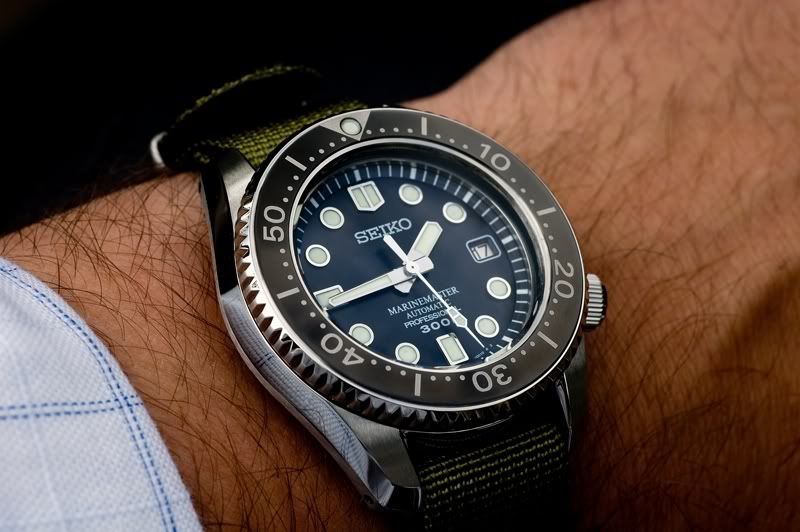
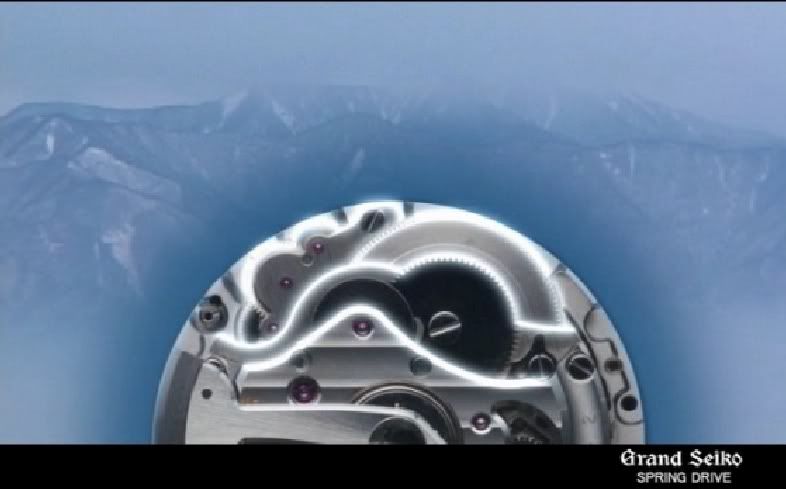

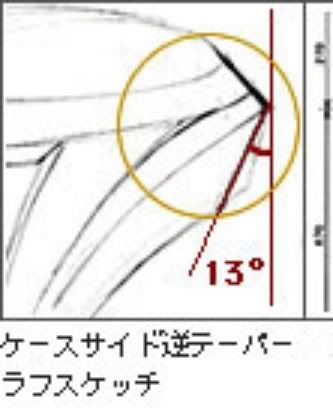
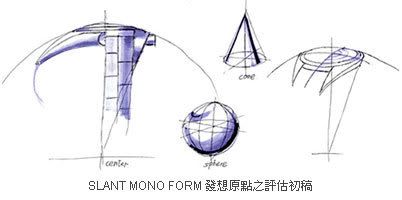
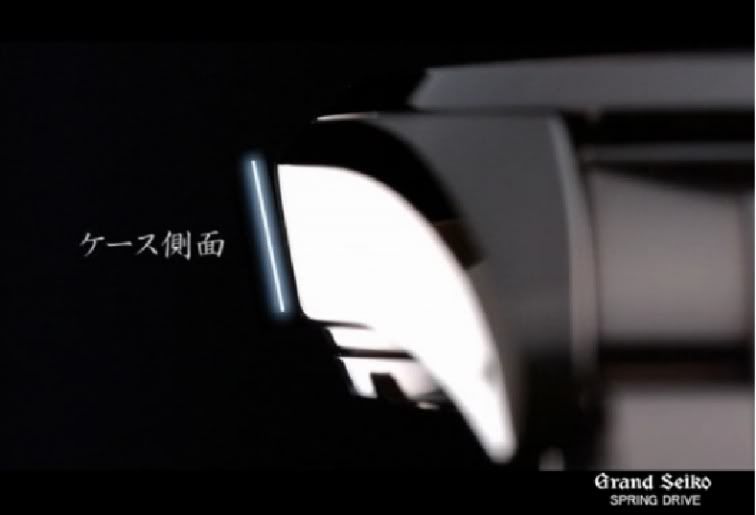
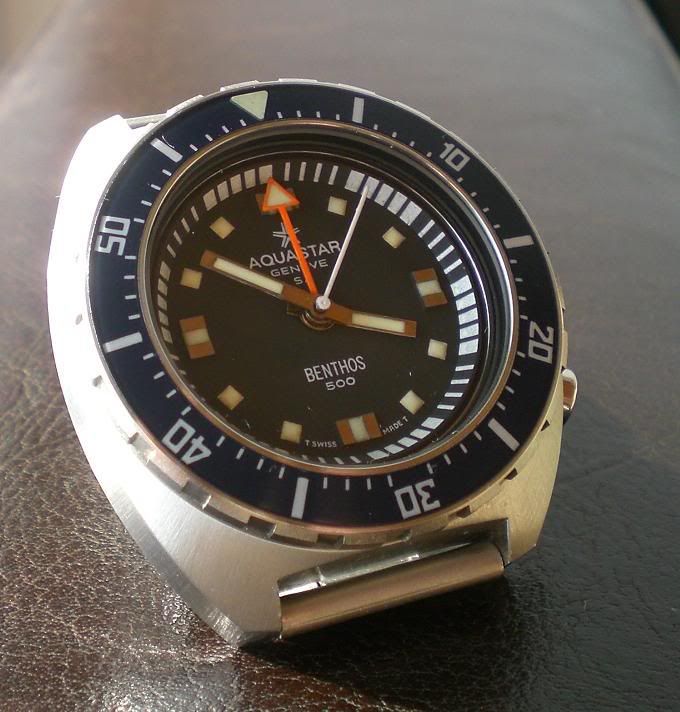
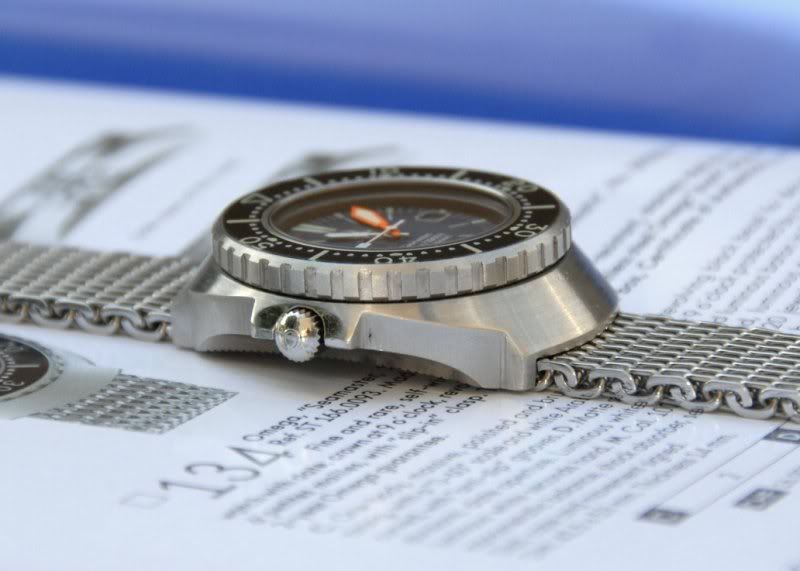


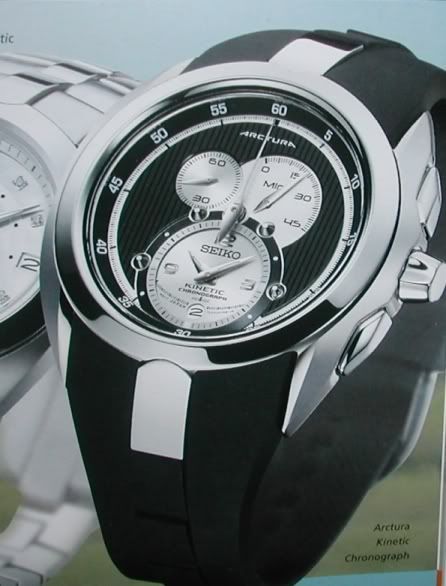
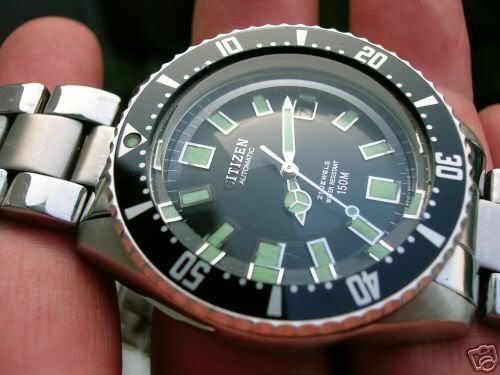
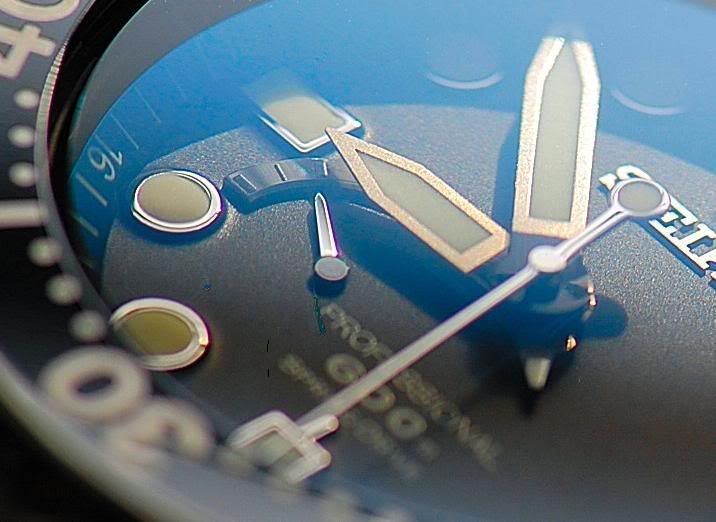
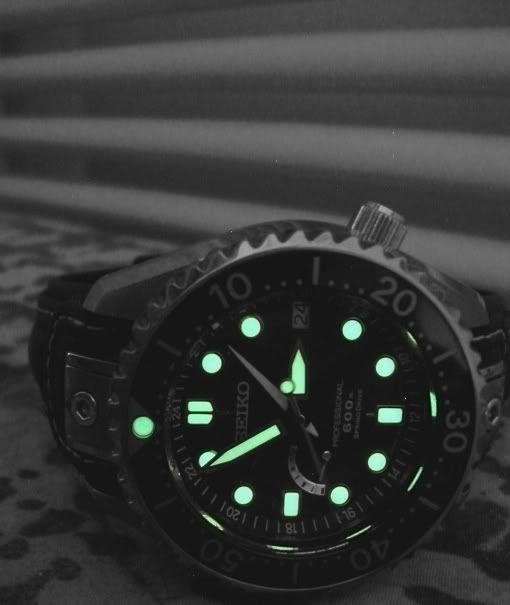

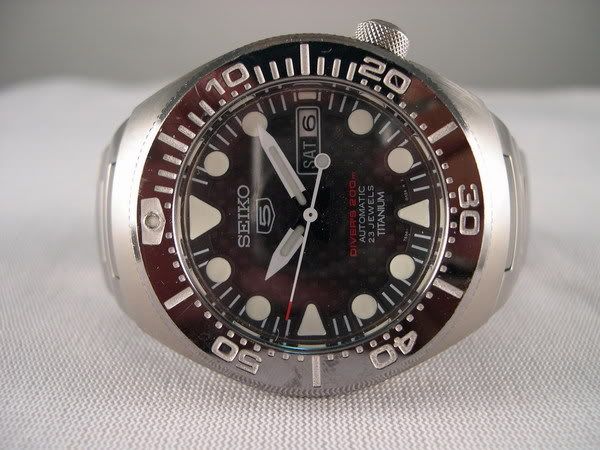
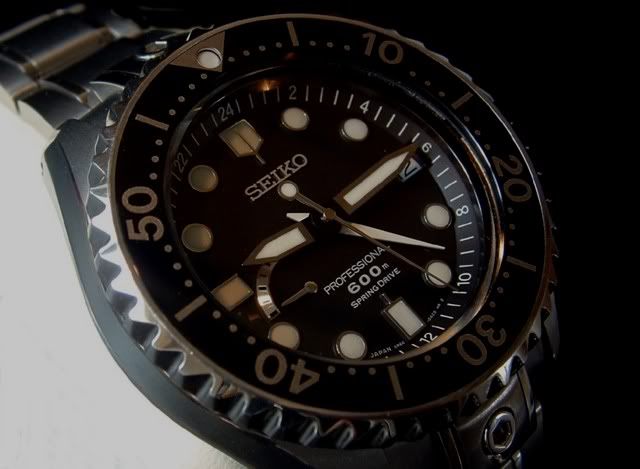
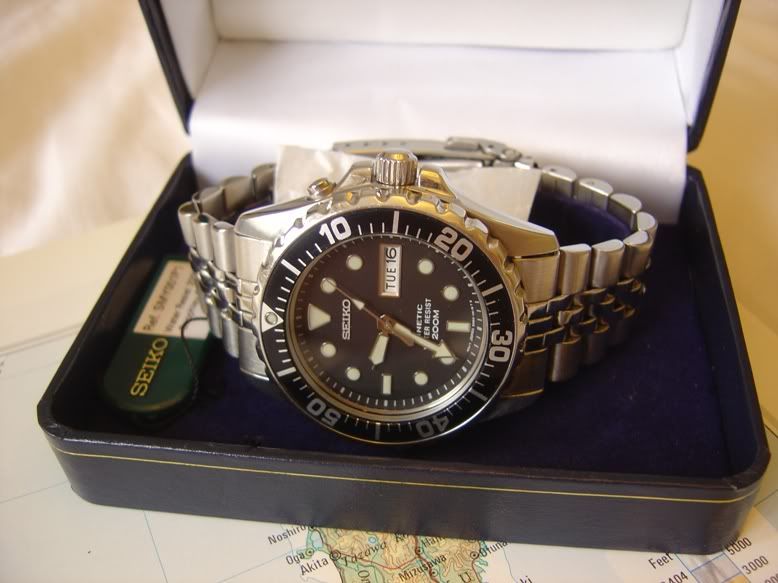
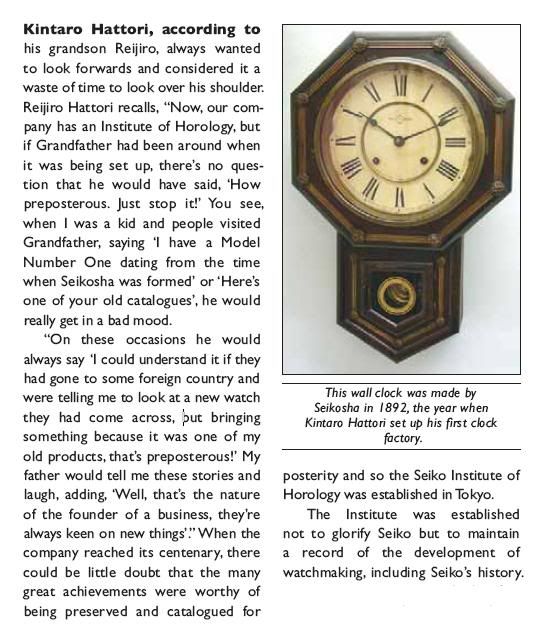


 Reply With Quote
Reply With Quote